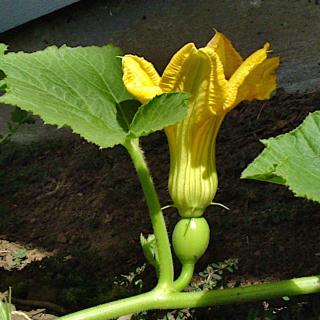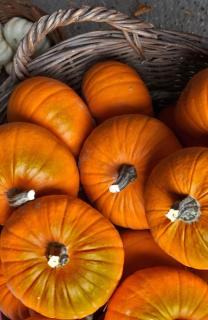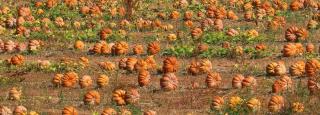

Pumpkin is a typical fall vegetable, esay to plant, grow and harvest.
Key Pumpkin facts :
Name – Cucurbita pepo
Family – Cucurbitaceae
Type – vegetable, annual
Height – 8 to 20 inches (20 to 50 cm)
Exposure – full sun
Soil – rich and well drained
Harvest – Fall
From sowing to harvest, each step is important and will help you to get nice pumpkins.

When transplanting the seedlings or sowing the seeds directly, provide for 3 feet (1 meter) growing space on all sides to give the pumpkins enough room.
You can pinch off stems after the 3rd or 4th leaf to stimulate plant growth.
To avoid keeping the pumpkins in close contact with the soil which could lead it to rot, it is better to add a layer of mulch or plastic between the fruit and the ground.

Most important is to harvest them before the first frost.
Generally, around 60 days are needed for flowers to appear, and then a further 80 days for the pumpkin itself to grow.
Pumpkins are harvested in fall and keep for several months when protected from moisture in a rather cool spot.
Native to North America, pumpkins are part of the same family as gourds or red kuri squash and come in a wide choice of shapes, colors and sizes.
Misleadingly, you might hear the word “pumpkin” when talking about other squash that look similar to true pumpkins.
Pumpkins are round and bright orange and their flesh is quite fibrous. Squash is flatter and colors range from orange to green.
With high levels of vitamin A, B, and C, these fruits also have the advantage of keeping for a long time over winter, ideally at temperatures of about 50 / 55°F (10 / 12°C).
Pumpkins normally weigh in at around 10 pounds (5 kg), but some specimens have been weighed at over several hundred pounds. The largest one in the world weighed in at 2632 lbs (1190 kg), in 2016 in Belgium, breaking the world record!

Read also: